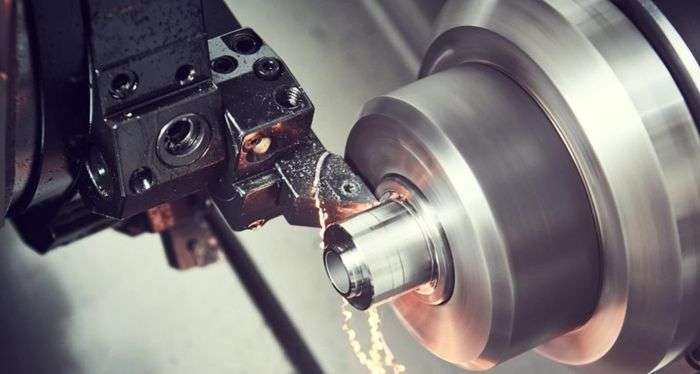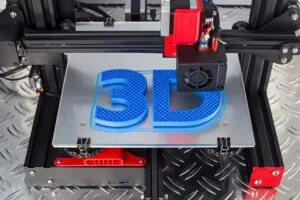3D printing and rapid prototyping are transformative technologies that have revolutionized industries ranging from manufacturing to healthcare. While these terms are often used interchangeably, they serve distinct purposes. Let’s dive into what sets them apart and why understanding the difference is crucial for professionals and enthusiasts alike.
Definition of Rapid Prototyping (RPT)

Rapid Prototyping (RP), introduced to manufacturing during the late 80s, is an emerging material deposition method technology and regarded as an impressive breakthrough for this generation of manufacturers. Combining mechanical engineering, CAD design software, reverse engineering techniques, additive manufacturing technology, numerical control technologies, material science research and laser technologies; rapid prototyping can quickly turn design ideas into functional prototypes or directly produce parts; providing an economical method of prototyping new designs while validating potential projects.

Definition of 3D Printing
3D Printing emerged during the mid 1990s as an innovative rapid prototyping technique using technologies such as light curing and paper lamination. Similar to traditional printing, with printers filled with “print materials”, such as liquids or powders. Once connected to a computer system, these “print materials” can be laid one layer at a time until eventually turning a virtual blueprint onto physical object – this process is known as 3D stereolithography printing technology.
At present, domestic media industry is used to refering to rapid prototyping technology as “3D printing”, as this term is more vivid and descriptive. But this terminology only refers to one branch of rapid prototyping – some rapid prototyping processes fall under “three-dimensional printing”.
Key Differences Between 3D Printing and Rapid Prototyping
While is a method used within the scope of 3D printing and rapid prototyping, the two terms are not interchangeable. Here’s a breakdown of the main differences:
3D printers are simpler forms of rapid prototyping machines; they generate less waste and have lower capacity requirements.
Rapid prototyping has long been utilized by automotive and aerospace industries as an efficient method for creating functional parts quickly.
3D printers tend to be smaller and more portable than their RP counterparts, making them suitable for office settings while using less power and space. 3D Printing and Rapid Prototyping specialize in low-volume reproduction of objects made of nylon or other plastic materials – thus producing smaller parts than their predecessors.
Rapid prototyping machines typically feature build envelopes of at least 10 inches on one side; 3D printers generally fall below 8 inches in one dimension. But both technologies can perform all of the functions that rapid prototyping machines do such as validating designs, creating prototypes and sharing information remotely.
3D printers are incredibly user-friendly and straightforward to operate and maintain, and DIY kits are readily available on the market to build them yourself. Cheaper than professional rapid prototyping machines, owning one for less than $1,000 may even be feasible; professional rapid prototyping designs typically start at $50,000.
3D printers do not match the precision of rapid prototyping machines and their material selection may be limited due to their simplicity.
Exploring the Forming Principles, Benefits, and Drawbacks of Popular Rapid Prototyping Processes
1. Selective Laser Sintering (SLS)
With SLS equipment, it is possible to quickly create special-shaped hot runner systems for metal molds and injection molds with high Rockwell hardness and forging performance, as well as directly manufacturing special and complex functional parts with rapid manufacturing capability for small batches requiring special and complex functional parts.
SLS technology has become popular due to its rapid production capability for such functional parts as well as its multi-variety personalized small batch production – features which have made this technique widely utilized across industries including aerospace, military, automotive engine testing and development, medical fields etc.

2. Vacuum Injection Molding Rapid Tooling (VCM – Selective Laser Sintering)
Also referred to as vacuum injection molding, vacuum molding employs an original template to produce a silicone mold under vacuum conditions before casting with polyurethane material, producing an exact replica of its template. Vacuum molding has become one of the most frequently employed rapid tooling technologies that produce products similar to engineering plastics while meeting various functional characteristics; and can even be utilized for small-scale production runs.
One VCM silicone mold can produce 20 sets of products. This process technology is particularly suitable for the replication of small- and medium-sized fine parts used in instrumentation and automotive production industries. Furthermore, its short time, low cost, and fast speed makes it an effective product trial production method.
General process flow includes 3D printing and rapid prototyping (hand model production and prototype replication), VCM Vacuum Injection Molding Machine Rapid Mold Production, followed by Small Series Replication and Production.

3. Low-pressure Reaction Injection Molding (RIM)
Low pressure infusion (LPI) is an emerging process in rapid molded product production. Once the two-component polyurethane material has been mixed and injected into a rapid mold at normal temperature and low pressure conditions, its product is formed through chemical and physical processes such as polymerization, crosslinking and curing of its material. Due to using liquid raw materials, small pressure can quickly fill mold cavities using RIM molds, thus significantly reducing clamping force and mold cost compared to traditional methods.
RIM molds have proven their worth for producing large-sized parts such as car bumpers, instrument panels and tailfins at reduced clamping force and cost; their applications span automotive 3D Printing and Rapid Prototyping trial production trials as well as instrumentation, sculpture creativity and architectural design projects among many others.
General Process Flow for Rapid Prototyping with SLS/CNC Rapid Prototyping includes hand model production on SLS/CNC rapid prototyping machines; rapid mold production using RIM rapid mold production methods; injection molding (small batch replication or production);

4. Computer Numerical Control (CNC)
CNC stands for computer numerically controlled machine tools and is controlled by programs with symbolic instructions or control codes that translate to computer code for use by the machine tool. Through tool cutting, blank materials can be processed into semi-finished and finished parts. Since Massachusetts Institute of Technology developed their first CNC machine tool in 1952, their use has spread throughout manufacturing industries including automotive, aerospace and military production facilities as technology has rapidly advanced both hardware and software-wise.

CNC has several distinct advantages over traditional machine tools: digitalization, high efficiency production and mass production capabilities. Furthermore, its digitalized nature enables it to deal with workpieces with complex structural shapes without issue; as a result, although not strictly classified as rapid prototyping technology by some, its industry peers often classify it as rapid manufacturing technology.
Which One Should You Choose?
When deciding between 3D printing and rapid prototyping, it’s important to consider your needs and goals:
- If you’re looking to create a functional prototype or small-batch production for a specific design, 3D printing could be the best solution due to its affordability and speed.
- If you’re in the early stages of design and need to quickly test different iterations of a prototype, then rapid prototyping (which may use 3D printing) is the ideal method for your needs.
Ultimately, the difference between 3D printing and rapid prototyping lies in their scope and purpose. 3D printing is a tool used for production, while rapid prototyping is a process that uses multiple tools, including 3D printing, to quickly create and test prototypes.
Applications in Different Industries
Both 3D printing and rapid prototyping are used across various industries, but they each serve different purposes depending on the stage of development:
In Product Design and Manufacturing:
- 3D Printing: Ideal for creating low-volume custom parts, producing unique designs, and making components that would be costly or impossible to create using traditional methods.
- Rapid Prototyping: Often used early in the product development cycle to create quick prototypes that can be tested and refined before final production.
In Healthcare:
- 3D Printing: Widely used for creating prosthetics, implants, and custom surgical instruments tailored to the needs of individual patients.
- Rapid Prototyping: Helps in creating medical devices and testing them before mass production.
In Automotive and Aerospace:
- 3D Printing: Used for creating lightweight components and custom parts, as well as for on-demand manufacturing.
- Rapid Prototyping: Plays a critical role in testing new car models and aerospace designs, ensuring safety and functionality before manufacturing.
Conclusion
In the fast-paced world of manufacturing, understanding the difference between 3D printing and rapid prototyping is crucial for maximizing efficiency and optimizing your design and development processes. While 3D printing is a method for creating physical objects, rapid prototyping is a broader concept used to quickly bring ideas to life and test them for functionality.
By leveraging both technologies in the right context, companies can reduce time to market, lower costs, and improve product quality. Whether you’re developing custom parts, testing a new design, or refining a product, knowing when and how to use 3D printing and rapid prototyping can make all the difference.








